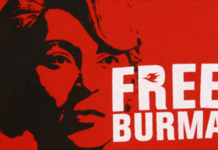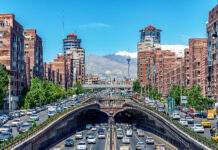by Tariq Rauf *, InDepthNews (IDN), OtherNews
At one point in the late 1960s, as many as eight different types were deployed at the same time. The US stockpile of nuclear weapons deployed in South Korea reached a peak in 1967 of some 950 warheads, but continued to decline afterwards until the last weapons were withdrawn in 1991.
In July 1970, the US notified South Korea of its plan to withdraw part of US Forces Korea (USFK); in response South Korea first considered the possibility of an independent nuclear weapon programme. In 1971, South Korea’s Weapons Exploitation Committee, attempted to obtain plutonium reprocessing facilities following the pullout of 26,000 US soldiers of the US Army’s 7th Infantry Division. Under pressure from the US, in 1975 France eventually decided not to deliver a plutonium reprocessing facility to South Korea.
On 23 April 1975, South Korea’s nuclear weapons research programme effectively ended with its ratification of the nuclear Non-Proliferation Treaty (NPT). On 12 June 1975, after South Vietnam had fallen in April 1975, then-South Korean President, Park Chung-hee first mentioned his nuclear weapons aspiration during a press conference (despite South Korea’s NPT ratification).
Fast forward to August 2004, when the IAEA cited South Korea for past undeclared nuclear activities in 1981 involving the reprocessing of nuclear material (plutonium) and the IAEA reported that regardless of the quantity of nuclear material involved the nature of the undeclared nuclear activities were a matter of serious concern.
In response, South Korea stated that the “experiments” involving uranium-plutonium solutions were conducted independently at the State-operated Korea Atomic Energy Research Institute (KAERI) by a group of 15 scientists and were not officially sanctioned. In 2005, South Korea escaped a finding of non-compliance by the IAEA Board of Governors and related reporting to the Security Council, regarding its past undeclared nuclear activities involving plutonium-uranium solutions, due to US suppression of a UK-proposed non-compliance resolution.
However, with South Korea’s cooperation on the matter with the IAEA, in June 2007 the IAEA Safeguards Implementation Report (SIR) for 2006 included the broader safeguards conclusion for South Korea to the effect that all nuclear material and facilities had been declared to the IAEA and that there was no indication of undeclared nuclear material and related activities.
It was reported on 11 January 2023, that South Korea’s President Yoon Suk Yeol had warned that “It’s possible that the [DPRK] problem gets worse, and our country will introduce [US] tactical nuclear weapons or build them on our own… we can have our own nuclear weapons pretty quickly”. But under intense US pressure, on 13 January South Korea reiterated its commitment to the NPT as a non-nuclear-weapon State.
26 reactors provide about one-third of South Korea’s electricity. 26 reactors provide about one-third of South Korea’s electricity from 26 GWe of nuclear power plant capacity, two reactors are under construction. South Korea’s Atomic Energy Research Institute (KAERI), with support from South Korea’s Ministry of Education, Science and Technology, is developing pyro-processing technology to reprocess the spent fuel from its fleet of 23 pressurized water reactor (PWRs), which involves electrochemical separation of fuel elements after dissolution in molten salt. KAERI also proposes that South Korea build liquid-sodium-cooled fast-neutron reactors.
The plutonium and other transuranic elements recovered from PWR fuel then would be recycled repeatedly through the fast-neutron reactor cores until they were completely fissioned. The US regards pyro-processing as a form of reprocessing that possibly could be used to make nuclear-weapon usable nuclear material and opposes in principle South Korea’s R&D in this regard. South Korea cites the shortage of spent nuclear fuel storage space as reason for pyro-processing to reduce its volume.
The 1974, US-South Korea Agreement on Cooperation on Atomic Energy requires US agreement if “any irradiated fuel elements containing fuel material received from the United States of America [is to be] altered in form or content”. To reassure the US, South Korea even requests US agreement even if US-origin nuclear material is not involved.
According to nuclear engineers, although plutonium recovered from light-water-reactor fuel is not weapon grade, it is potentially weapon usable. It is postulated that a single 1-GWe pressurized-water nuclear power plant discharges about 200 kilogrammes of plutonium in its spent fuel annually, which would be sufficient, if separated, for 25 Nagasaki-type nuclear bombs.
Arms control and non-proliferation. Arms control and non-proliferation proponents maintain that were South Korea to go ahead with pyro-processing on an industrial scale, this could negatively affect the nuclear non-proliferation regime.
As for Russian cooperation with North Korea, it is virtually inconceivable that Russia would assist North Korea on its nuclear-weapon programme, though ROSATOM possibly might be interested in constructing one or more nuclear power reactors? Recall that under the 1994 Agreed Framework between the US and North Korea, an international consortium involving participation of the EU, Japan, South Korea and the US were to build two 1000 MWe nuclear power plants in North Korea.
As for Russian cooperation with North Korea on ballistic and cruise missile and space programme; North Korean missile technology already is based on Soviet era missiles that reportedly were supplied by Egypt after the 1973 war. Again, recall that Japan and South Korea’s space launch vehicles (rockets) are based on US technology.
North Korea’s heavy ballistic missile Hwasong-18 reportedly utilizes elements of Russian technology. However, despite its lack of resources, North Korea has a highly competent nuclear and missile work force – what it lacks is not so much the technology but the components. It is very surprising and worrisome that there are no diplomatic initiatives to work on denuclearization of the Korean Peninsula. At the Hanoi meeting in February 2019, apparently Kim Jung-un offered dismantlement of the key nuclear complex and Yongbyon in return for full sanctionsf, but Donald Trump’s senior advisors scuttled the deal. Unfortunately, no new peace initiatives are on the table regarding the Korean Peninsula. I doubt that either China or Russia would provide technical assistance to North Korea on missiles and nuclear weapon activities.
On the cover photo, nuclear weapon South Korea and Nuclear weapon USA, Nuclear war with USA vs South Korea ©Fly Of Shallow Studio/Shutterstock.com
* Tariq Rauf is Former Head of Verification and Security Policy at the Vienna-based International Atomic Energy Agency (IAEA). The views expressed are the author’s personal views [IDN-InDepthNews]
























